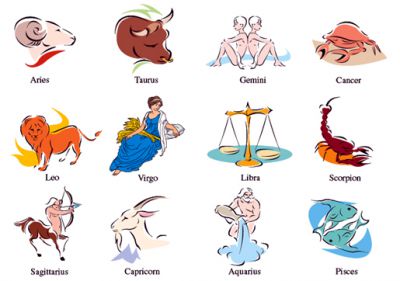Horoscope

Horoscope method of predicting the future based on a diagram showing the positions of the planets and the signs of the zodiac at the moment of a person's birth. The exact moment of birth must be recorded to prepare an accurate horoscope. In the past, in the absence of mechanical clocks, this accuracy was ensured through a special method.
No evidence about the practice of casting horoscopes has been found in India prior to the Christian era. It is believed they were introduced in India by Persian-Afghan races coming to the subcontinent around the third century AD. The first mention of horoscopes in India is in a 6th century book by the astrologer Varahmihir. It is therefore believed that horoscopes must have been prepared some time prior to this.
In casting a horoscope three matters are of primary concern: zodiac signs, planets and lagna (auspicious moment). There are 12 signs of the zodiac: Aries, Taurus, Gemini, Cancer, Leo, Virgo, Libra, Scorpion, Sagittarius, Capricorn, Aquarius and Pisces. There are 9 'planets': the Sun, the Moon, Mars, Mercury, Jupiter, Venus, Saturn, Rahu and Ketu. For the purpose of casting a horoscope, the sky is shown as a circle divided into 12 sections. Each zodiac sign occupies one section of a circle. Thereafter the positions of the 'planets' at the moment of birth are recorded, using the first letter of each planet. The lagna is then calculated and the zodiac sign indicating lagna is designated as js (lang).

The zodiac is not the same everywhere. The Indian zodiac differs from the western one. Moreover, in India itself there are three patterns. Apart from South India, the movement of the zodiac circle is counterclockwise. The circle in South India and in Bengal is stationary. The zodiac sign of Aries is always on top while the lagna keeps changing. In North India-as in the West- the zodiac circle is not stationary, but the auspicious time or lagna is always fixed. In the circle used in North India, the lagna is always on top, while in the circle used in the West it is on the left.
Every zodiac sign has a regulatory planet: Capricorn and Aquarius are regulated by Saturn, Pisces and Sagittarius by Jupiter, Aries and Scorpion by Mars, Taurus and Libra by Venus, Gemini and Virgo by Mercury, Cancer by the Moon and Leo by the Sun. The lagna is the moment when the Sun crosses a zodiac sign. If someone is born at the moment when the Sun's position is in Aries, his or her lagna is recorded as Aries. Every lagna lasts for two hours. Any error in recording the date of birth and marking the zodiac signs, planets and lagna is believed to distort predictions.
In predicting the future, the events in the life of a man or a woman are divided according to the horoscope into 12 sections known as bhava: tanu (body), dhan (wealth), sahaja (brother), bandhu (friend) and mother, putra (son) and knowledge, ripu (enemies) and illnesses, jaya (husband), nidhan (death), dharma (religion) and fortune, karma (work) and father, income and expenditure. The consideration of tanu begins from the position of the lagna on the zodiacal sign. The other bhavas are then calculated serially. These basic principles of calculations are almost universal. Indian astrology has a special peculiarity in the matter of calculating dasha or what will happen in the life of a child and when. The dasha is calculated on the basis of the position of the child's birth planet. There are 42 ways of calculating this, but at present only two are generally used.
In the past, all aristocratic families had horoscopes prepared when a child was born. Horoscopes were particularly important when marriages were arranged.
The horoscopes of both the bride and the bridegroom were examined carefully to see if the two were compatible. Though horoscopes are still cast today, they are no longer considered essential. Astrologers, however, use the date and time of a person's birth to predict his or her future. [Dulal Bhowmik]
See also astrology.
